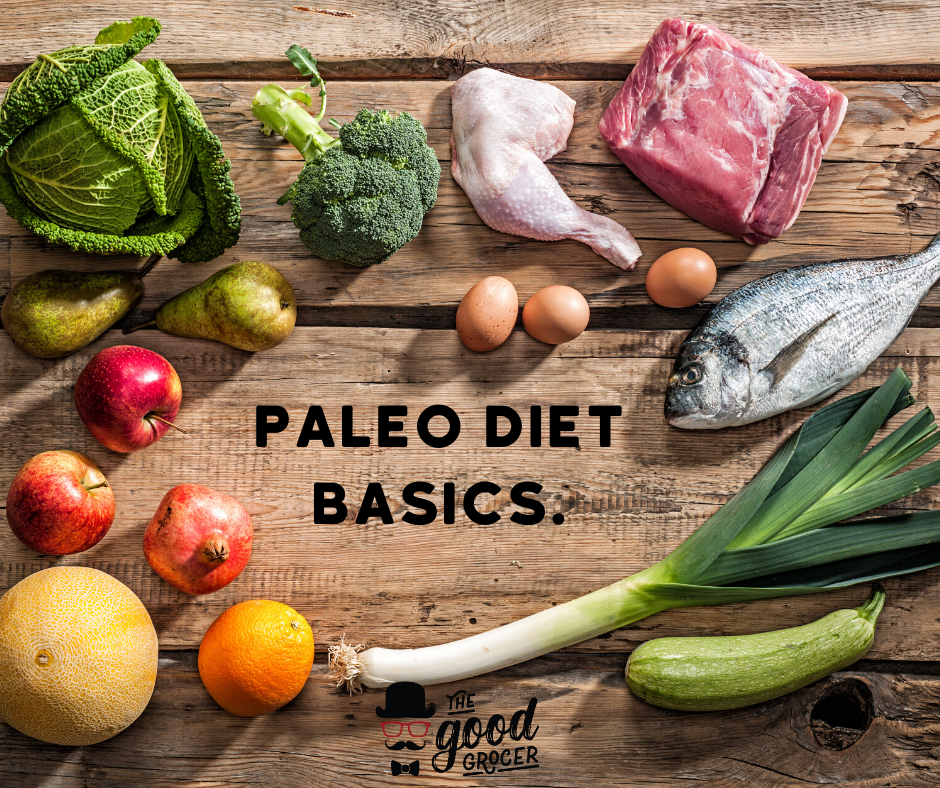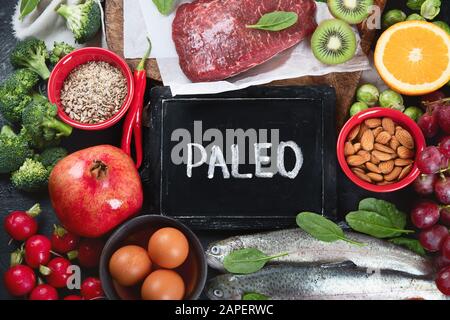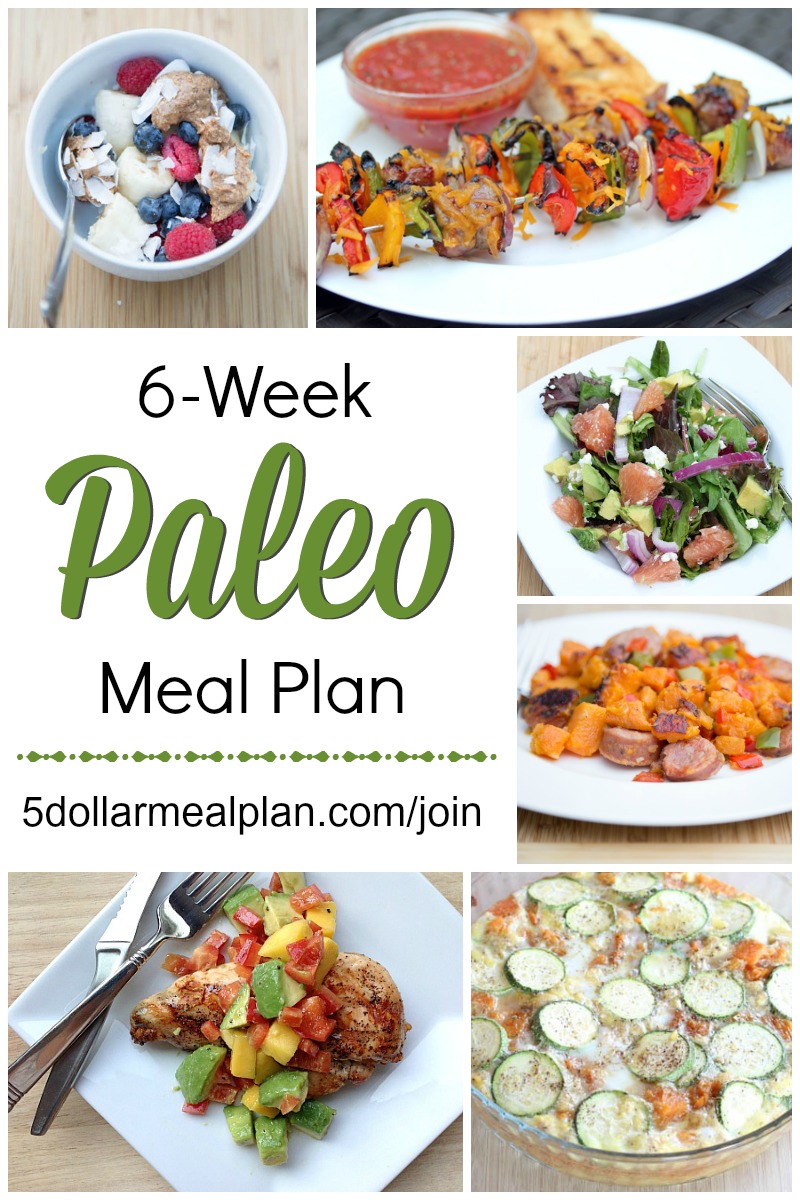
Paleo is a diet that emphasizes eating the same foods our ancestors ate. This diet includes foods such as bananas with almond butter, dried pumpkin seeds, and apricots. It is also filled with chicken, sweet potatoes, and vegetables. EatingWell believes that certain foods are important, even though it may seem restrictive. Here, we'll discuss which ones you can eat while still maintaining a healthy diet.
Pola makanan paleolithic manusia
Christina Warinner, Ph.D., studied pola makan manusia purba and mitos-mitos pola makanan paleolithic manusia in 2010. She reveals that manusia Paleolithic manusia was a large consumer of daging and enjoyed all kinds of meat. This myth was widely believed by paleolithic people, but is now considered outdated and irrelevant.
The diet paleo, also known to be the diet the manusiagua, allows for a more traditional way of eating that is similar to what manusias gua or man used to have. They help preserve their heritage and improve their kesehatan. However, this diet is not for everyone. It is not right for everyone.
Two types of kelompokan make up the lukisan of Ramasokat: ceruk, and lukisan-gua. They were grown in the Sulawesi Tenggara area and Liabalano. The lukisan gua has a combination of proteins, fats and carbohydrates. These nutrients can support healthy living and help us understand how humans evolved.

Modern humans eat a variety of foods that have many benefits but also come with some risks. People who eat foods rich with nutrients, such the Paleolithic Era diet, are more likely than others to develop diseases. Clean eating will help reduce your risk of disease. Clean Eating will help you eat better. The obvious benefits of this diet are clear: eating low in fats can have positive effects on your health. Also, you won't get sick if you eat too much.
Foods that are allowed on a paleolithic diet
A lot of processed foods contain added sugars and vegetable oils. These can have a negative impact on your health. The excess salt and refined sugars that are found in processed foods can lead to obesity. Heart disease can also be caused by high levels of salt. Vegetable oils can also be controversial. The American Heart Association suggests that safflower and corn oil replace canola. These oils contain high levels omega-6 fatty acids.
Many commercial paleo diets restrict dairy products to a minimum, while others have stricter restrictions. Lean pork loin, roasted chicken and onion stuffing with carrot stuffing and steamed broccoli are some of the foods that paleolithics can eat. Other paleo diet plans allow small amounts of maple syrup or honey. Research on the health benefits of this diet is mixed.
Legumes, which are high in phytic acid, should be avoided by paleo-lovers. These substances can inhibit the absorption essential minerals from the stomach. They may be permitted in some instances. Although it is tempting to eat potatoes and legumes, they are not recommended for daily consumption. You should instead include lots of fruits, vegetables and other healthy foods in your daily meals.
Guidelines for eating paleolithic food
The Guidelines for Eating a Paleolithic Diet are very different from the typical modern diet, but they are both based on the same principles. While the Paleolithic diet was primarily composed of animal products, it is also rich in plants, and there are few limitations. It is important to remember that your genetic makeup may not allow you to eat this diet. Additionally, the increased meat consumption may be detrimental to your health. If you think that you might benefit from a Paleolithic diet, you should proceed with caution.

The Paleolithic diet excludes dairy products from most meals. You may be at risk of nutritional deficiencies if you cut out these important food groups. Tooth decay can be caused by a deficiency of calcium. A diet low in this mineral may also cause problems with your bones and teeth. Calcium is also important for blood clotting, muscle contraction and other functions. Whole grains are also less likely to develop heart disease, stroke, or type 2 diabetes. However, since grains were virtually eliminated, you might be at high risk for calcium deficiency.
The guidelines for eating a Paleolithic diet have many specific tenets. It emphasizes eating nutritious foods, such as fruits and vegetables, and restricts carbohydrates and processed food. To avoid overdoing it, it is important to carefully follow these guidelines. Keep in mind that every person will have a different paleolithic food plan. It is important that you understand that the Paleolithic lifestyle was common 10,000-12,000 years ago.
FAQ
How do you choose the right career path to become a chef? How can I get started in my career as an chef?
Apprenticeships are a great way to get started if you want to become a chef. Apprenticeships give you the opportunity to work for many years without having to pay tuition fees. After completing your apprenticeship, you can apply for a position as a sous chef. Sous chefs oversee cooks and help them make salads and desserts. They also supervise the operation of the restaurant.
What Are the Requirements To Be a Chef?
A bachelor's degree in culinary art is necessary to become a professional chef. You will also need to pass several tests administered by ACF. Once you've completed these requirements, you'll receive a certificate verifying your qualifications.
How long does it take to learn to cook? What time do you need to learn how to cook?
It depends on the skill level. Some people can learn basic cooking techniques in as little as a week. Others might need months or even years to master basic cooking techniques.
There are many factors that affect the time required to learn how cook. A person who has never cooked before will likely need more time to learn than someone who is a regular cook. Some types of cooking are more difficult than others. Baking is more difficult than frying.
You should learn a particular technique to improve your cooking speed. Once you are proficient in that technique, you can move onto the next one. You don't need to worry about how many days or weeks it took to learn how to cook. Enjoy the process and keep practicing.
Are you able to cook by yourself?
Yes, you can be a self-taught cook! Everyone loves cooking, regardless of whether they are skilled or not. If you are interested in learning how to cook, start cooking at home. Start small with things like making pancakes or spaghetti sauce for your dinner. You can learn the most by trying new recipes and making mistakes. It is possible to make mistakes.
The time it takes to learn to cook can vary from just a few hours up to several weeks, depending upon your skill level. Remember that cooking is not about following recipes. There are many different ways to prepare food, so if you have an idea in mind, go with it.
Where can you find free online cooking courses?
Numerous websites offer free cooking lessons. YouTube is a great place to search for cooking videos. You can find thousands of recipes on certain websites. You will need to pay a monthly subscription, but you can still try the site for free for 30 day.
How to be a Chef
There are many avenues to become a professional chef. To start, you can take a course at your local community college. Consider attending culinary school. Finally, you can take a paid internship.
Statistics
- The median pay for a chef or head cook is $53,380 per year or $25.66/hour, according to the U.S. Bureau of Labor Statistics (BLS). (learnhowtobecome.org)
- On average, chefs earn $58,740 a year, according to the BLS. - learnhowtobecome.org
- under 10 Kids have been taught that there is special food just for them, and Fiese says that 10 percent of kids will throw a tantrum if they don't get the food they want. (washingtonpost.com)
External Links
How To
How to make a perfect eggroll
Omelets are one of my favorite foods to eat at breakfast. How do you make them perfect? I have tried many different recipes and methods, but none of them work. So today, I want to share some tips and tricks with you so you can make your own delicious and fluffy omelets every morning.
First, eggs can be very temperamental ingredients for making omelets. Eggs must be purchased fresh, preferably organic, and kept chilled until ready for cooking. You must keep them cool enough to allow the whites to form properly and the yolks to become too runny if they're not kept at the right temperature. This can make your omelets look bizarrely colored. If you plan to cook the eggs right away, it is best to use room temperature eggs.
Another tip is to separate the egg before adding it to the pan. It is important not to allow any white to mix with the yolk as this could lead to the omelet becoming curdled.
You might burn the bottom of the egg if you place the egg directly on the stovetop. This could ruin the texture of your omelet. Instead, heat the egg for 10 seconds in the microwave before placing it in the pan. The heat from the microwave cooks the egg just enough without overcooking it.
Next, let's talk about mixing the eggs. Mix eggs well together. You need to turn the bowl of the mixer upside down. Next, shake the bowl vigorously. This allows the air to be whipped and the egg to be mixed thoroughly.
The fun part is now - adding the milk to the mixture. First, pour half of the milk into the beaten eggs and then fold the eggs gently into the remaining milk. You don't need to worry if streaks remain. They will disappear once you flip your omelet.
After folding the eggs fold the pan onto medium heat. When the oil starts to hot, wait for the pan to cook. Add 1/4 cup butter to the oil and swirl it around to coat all sides of the pan. Next, carefully open the lid and sprinkle salt into your pan. The salt will help to prevent the omelet's sticking to the pan.
Once the omelet forms, cover the pan again. Let the top side set completely. Use a spatula to flip the omelet or turn the pan upside-down. Cook the other half for another minute. Serve the omelet immediately by removing it from the pan.
This recipe works best using whole milk. Skimmed milk is also possible.